signed
1850 · Probably New England
by Rook, T.C.
Probably New England, 1850. Near Fine. A small naive drawing, fully realized, of a nude reclining woman resting her head on a rock or pillow, survives from probably around the 1850s, perhaps earlier. Captioned "L'Envie", we are fairly confident that the "artiste" was American, since he also wrote his name on the back of an endpiece, or the inside of the thicker bone rear cover. Above the owner's name, which is T.C. Rook is drawn the symbol or emblem of the Freemasons -- a simple compass and square. Unfortunately, we don't have enough clues to realistically hope to figure out who this Mr. Rook was exactly. Our strong intuition tells us this object, and Mr. Rook as well, were from the Northeast United States, and probably New England. The bone is from whale, for one thing, and there is an impalpable quality to the object and artwork that underlie our supposition. When closed, the object at its tallest measures 9 cm, and it is 5 cm wide. Its stylus is 9 cm, housed in a fluted column side pipe designed so the finial of the stylus rests a little above the pipe when the stylus is inserted. When one lifts a small metal piece on the top, one can fan out five thin bone slabs which pivot on a metal pin placed at the bottom of the object. With the stylus one can write on these bone pieces forever, with the scribbles completely erasable and the slabs reusable. The stylus won't run out of ink or lead. However, if one tries to use it to write on paper, all one will see are colorless scratch marks. It is the synergy between the stylus and bone that was the impetus for making a notebook like this. Unlike most miniature almanacs and notebooks, both antique and more modern, the stylus isn't called upon to double as a locking device -- a metal clasp at top does that work. Aesthetically, the notebook has a quiet beauty. Its distinctive design's primary element of this design is a basket weave pattern, which is also sculpted, giving the surface a texture, the squares ever so slightly rounded and pillow-like, with parallel lines within each of these squares also incised. All corners are pronounced with tiny round metal studs (although a few have fallen off). The sides of the notebook are rounded in fluted columns. The clasp, along with the top of the writing implement, offer a contrast with the bone since they are metal pieces. The clasp has a decorative shape that brings to mind the larger and more imposing ones attached to books from centuries prior to the making of this notebook. The bone has some discoloration -- patches of orange, some darkening. We think much of this is a natural process, or what happens to the material over time. We would liken it to a form of seasoning. There is a narrow short convex chip on the bone side pipe edge which abuts the front plank when the notebook is closed. We doubt this will bother most people. The metal parts -- the clasp, the pin and the stylus, could use a polishing if one prefers the metal to be shiny. We don't regard this as a condition defect.
(Inventory #: 20521)
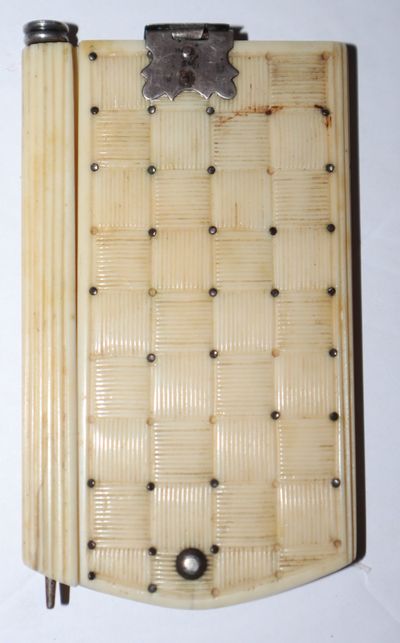
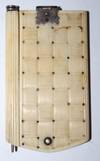
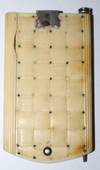
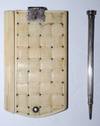
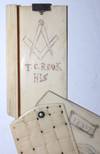



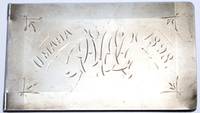
![[Menu] Tall Drinks and Short Snorts. Rough Rider Room. Hotel Roosevelt, New York](https://d3525k1ryd2155.cloudfront.net/h/811/464/1693464811.0.m.jpg)